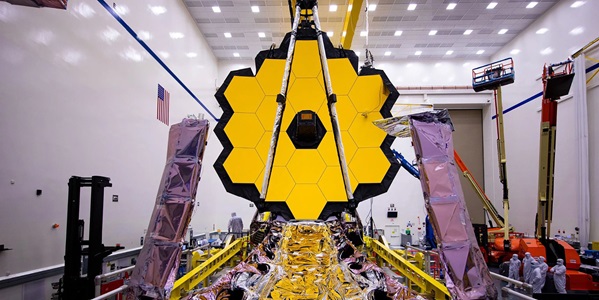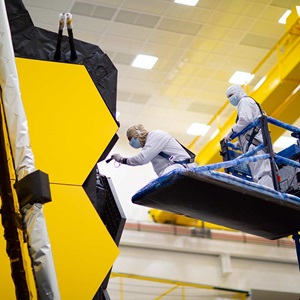Creating Zero G on a Planet Weighed Down by Gravity
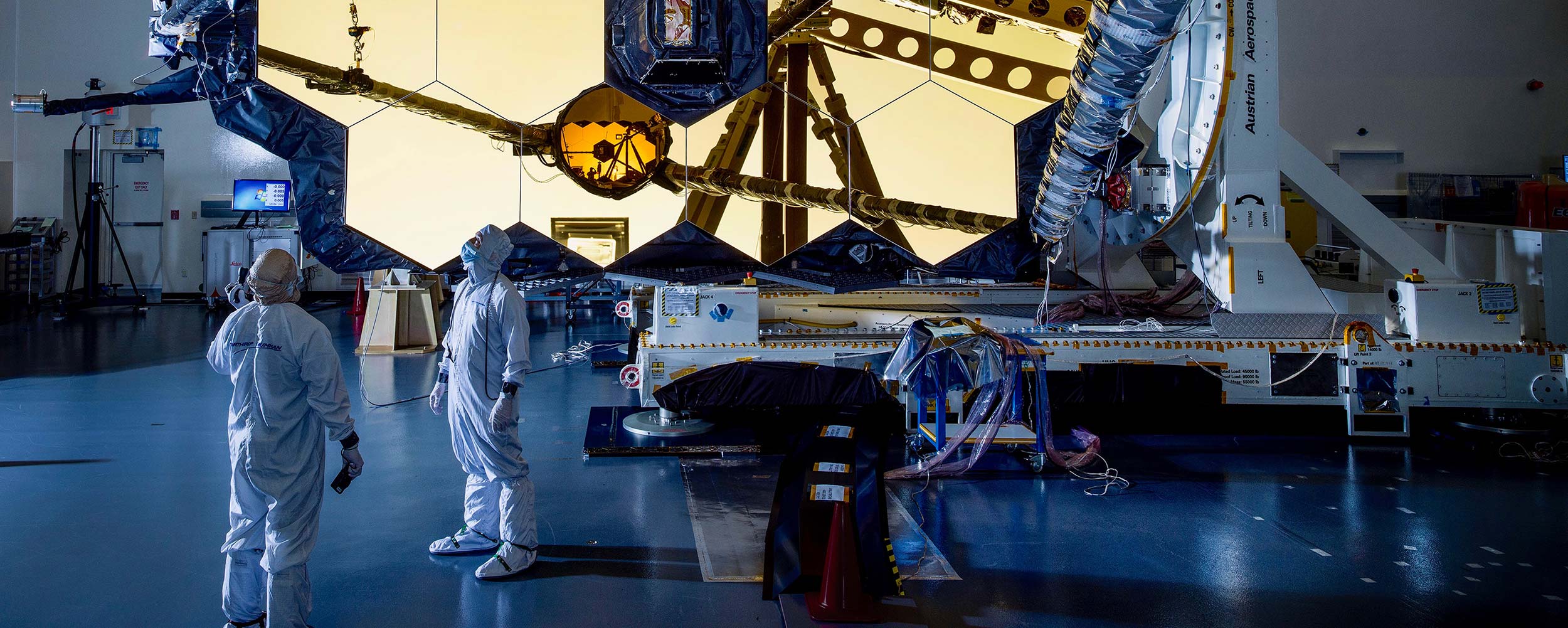
By Albert McKeon
It might seem like a tall order to conduct zero-gravity (G) testing on space technology here on Earth — where there's a lot of gravity.
But using weights, pulleys and other forms of ground support equipment (not to mention a deep understanding of physics), Northrop Grumman engineers can mimic, as much as possible, the weightlessness of zero G. Their ability to unburden flight hardware from the bonds of gravity during Earthbound testing approximates the conditions that specialized equipment will encounter in weightless space.
All kinds of space technologies are analyzed by these mechanical engineers, but no project has perhaps tested their knowledge and fortitude more than NASA’s James Webb Space Telescope. Webb is a marvel of engineering itself and has unique characteristics and components that prompted the mechanical engineers to rely on a playbook that wouldn't necessarily be followed in the development of other spacecraft.
But this challenge was embraced by the engineers. They found Webb invigorating and perhaps unsurpassable, even in a profession that presents its fair share of remarkable work. Having a hand in the creation of space technology is always rewarding — preparing Webb for its historic mission to study the universe will go down as a dream assignment.
"I've worked on a handful of programs, and this is a once-in-a-lifetime opportunity," said Jonathan Chang, a Mechanical AI&T (Assembly, Integration & Test) manager at Northrop Grumman who worked on Webb for more than a dozen years before recently shifting to other projects. "It's a huge undertaking. I'm proud of my team and will now be watching as it prepares for launch."
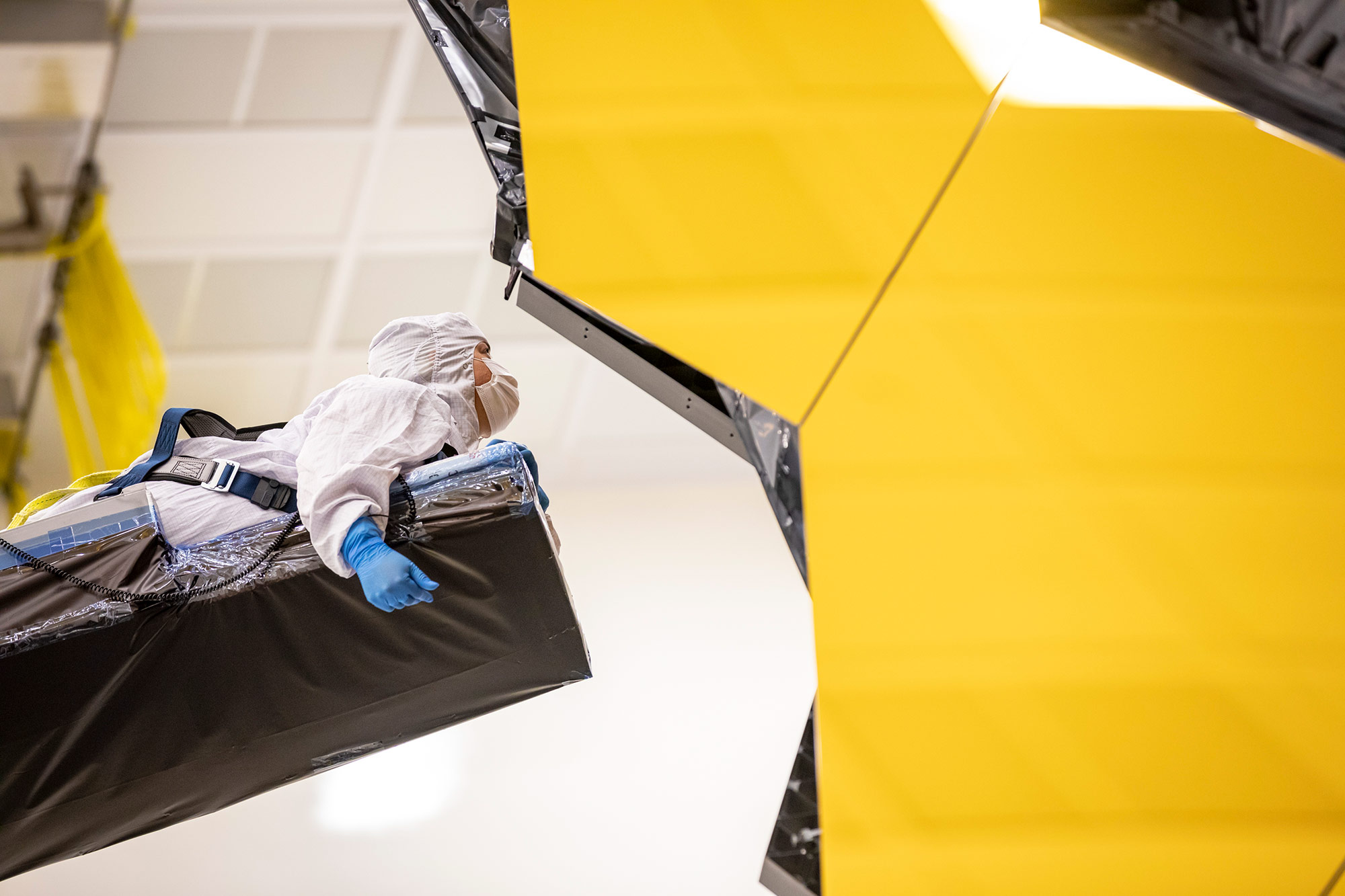
Replicating Zero G at Scale
The massive space telescope will observe stars forming planetary systems and use infrared wavelengths to learn more about the first galaxies that formed in the early universe.
As Chang mentioned, Webb’s development was a "huge undertaking" and the telescope itself is physically as large as it is ambitious.
The base of its protective multi-layered sunshield stretches out 69.5 feet by 46.5 feet, half the size of a 737 jet but just big enough to host a regulation tennis game. Yet, despite its bulk, Webb is intricately designed to accommodate its many moving pieces. NASA and Northrop Grumman created an origami-styled observatory so that it can be neatly folded inside a conventional launch rocket and then unfolded in space. Eighteen hexagonal sections will stretch out over 21 feet in diameter and work together to form a single telescopic mirror. Protecting the mirror from the heat and light of the sun, Earth and moon is the five-layered sunshield.
The development and testing for Webb has lasted for more than two decades — not just because of its complexity but because once it is in space, there's no going back. All its components must work when it is 930,000 miles away from Earth.
"We can't send astronauts to fix it. We deploy only one time," Chang said. "That's why we usually do many rounds of testing."
Limited by the pull of Earth's gravity, Northrop Grumman engineers used ground support equipment to replicate zero G.
"We use different kinds of lift or support fixtures, anything that has the ability to offload the weight of the flight hardware while running tests," said Mei-Li Hey, a mechanical ground systems engineer for whom Webb is her very first project with the company.
Offsetting Gravity with Physics and Familiar Functions
The methods behind zero-G testing might seem like something out of a script for the "MacGyver" TV show, but there's rigorous science behind it all. Take, for instance, the motor that will lift the telescope once Webb is in its observation position nearly a million miles away. The challenge for Chang, Hey and their colleagues was to prove the motor can in fact move the 8,000-pound telescopic mirrors with no gravity but do so in a test environment in which it can lift no more than 1,000 pounds.
To simulate weightlessness, they have designed some ground support equipment that behaves similarly to gym equipment, Chang said. Just as a fitness enthusiast might use a counterweight-assisting pull-up bar to maximize a workout, Chang's team designed similar fixtures to help the motor tug the weight of the mirrors. In fact, even with zero-G testing completed, as Webb awaits launch, its mirrors were hanging with the help of counterweights attached to a wall.
Many zero-G tests were modeled this way: using pulleys, counterweights and other unique mechanical designs to offset gravity and demonstrate how Webb's components will someday move and operate in space. High-precision bearings, for instance, reduced friction, as experienced in space. Also, the team used something that looks and functions just like an air hockey table, except it was blown out to scale to move large Webb components from one point to another.
We look upon things we already know and build upon them, combine them and utilize them in a more creative way.
Testing is rarely perfect or easy, and that's the way the team wants it. After all, space is not easy and the team must be prepared and test for all sorts of scenarios.
Hey and her team are able to quickly figure out solutions to problems that arise on the floor. "We'd call the whole team together and brainstorm different solutions, and ensure that we get to the root cause of the problem. 'What's causing this anomaly or discrepancy?' Maybe the steps are out of order, or maybe it needs a redesign, and we didn't consider something else. There were a lot of different problems to solve every day."
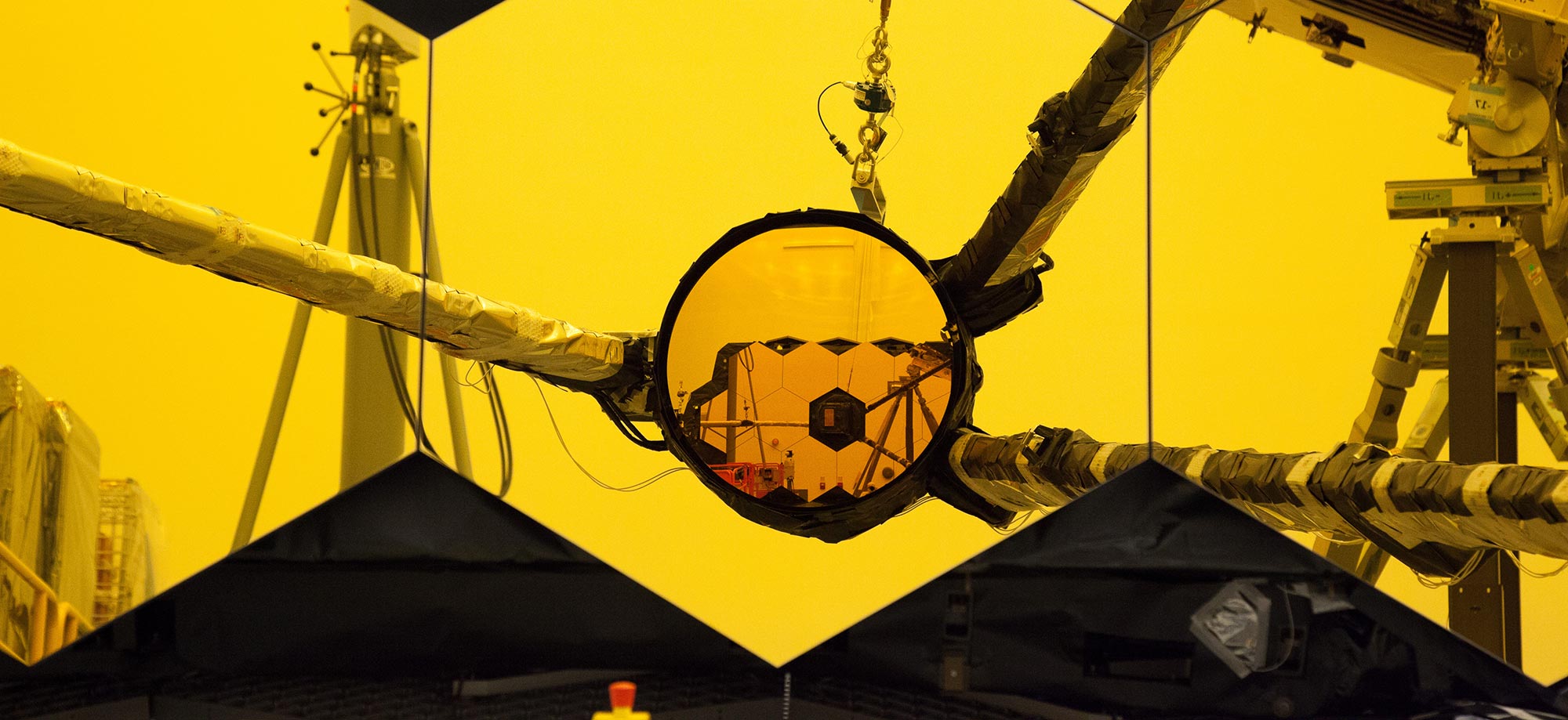
Marvel Making History
The ground systems engineers tested for more than weightless conditions. They also created support systems to help colleagues run environmental, acoustic and other types of tests. The commonality of those tests was repetitiveness. According to Hey, who will work on Webb until almost before it launches, they ran several reviews to ensure things are what they seem to be.
She and Chang look forward to the launch and take pride in their roles behind its scientific and historic significance.
Chang hopes his two children — who are too young to understand what exactly "the giant golden baby" that daddy has been working on actually does — will someday see the pictures taken by Webb and marvel at them the same way he did at the first images sent by Hubble Space Telescope.
For Hey, her work on Webb has been a series of firsts that she hopes will deliver even more firsts.
"This is not only the first thing I've worked on but the first thing I've ever invested in its launch," she said. "I can't imagine how it's going to feel when it finally gets up there and is deployed and starts sending back some really cool stuff. I hope we find aliens."
More innovation stories
Read all stories about advanced technology and innovation >>

